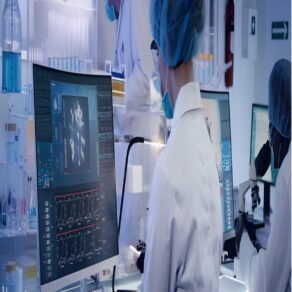Introduction: Endometriosis is a chronic and often painful condition that affects millions of women worldwide. Despite its prevalence, it remains widely misunderstood. In this article, we will delve into the intricacies of endometriosis, exploring its causes, symptoms, and treatment options to provide a comprehensive understanding of this condition.
1. What is Endometriosis?
- Definition: Endometriosis is a disorder where tissue similar to the lining inside the uterus, known as endometrium, grows outside the uterus.
- Locations: It can occur on the ovaries, fallopian tubes, outer surface of the uterus, and other organs within the pelvis.
- Mechanism: During the menstrual cycle, this tissue thickens, breaks down, and bleeds. However, the misplaced tissue has no way to exit the body, leading to inflammation, pain, and the formation of scar tissue.
2. Causes of Endometriosis:
- Retrograde Menstruation: One of the leading theories suggests that menstrual blood flows backward through the fallopian tubes into the pelvic cavity instead of leaving the body, leading to endometrial implantation.
- Embryonic Cell Transformation: Another theory proposes that hormones such as estrogen may transform embryonic cells into endometrial-like cell implants during puberty.
- Immune System Disorders: Dysfunction in the immune system may fail to recognize and eliminate endometrial-like tissue growing outside the uterus.
3. Symptoms of Endometriosis:
- Pelvic Pain: Chronic pelvic pain, often worsening during menstruation, is the most common symptom.
- Painful Periods (Dysmenorrhea): Severe menstrual cramps that may worsen over time.
- Painful Intercourse (Dyspareunia): Pain during or after sexual intercourse.
- Infertility: Endometriosis can affect fertility, although not all women with the condition experience infertility.
- Other Symptoms: Fatigue, diarrhea, constipation, bloating, and nausea, especially during menstruation.
4. Diagnosis:
- Medical History: A detailed medical history, including symptoms, is the first step.
- Pelvic Examination: Physical examination may reveal abnormalities such as cysts or scars.
- Imaging Tests: Ultrasound or magnetic resonance imaging (MRI) may be used to visualize the pelvic region.
- Laparoscopy: The most definitive method involves surgically examining the pelvic cavity using a laparoscope.
5. Treatment Options:
- Pain Management: Over-the-counter pain relievers, such as nonsteroidal anti-inflammatory drugs (NSAIDs), can help alleviate pain.
- Hormonal Therapies: Birth control pills, hormonal patches, or intrauterine devices (IUDs) can help regulate hormonal fluctuations and reduce symptoms.
- Surgery: Laparoscopic surgery can remove or destroy endometrial tissue and adhesions. In severe cases, a hysterectomy (removal of the uterus) may be recommended.
- Fertility Treatments: For women struggling with infertility due to endometriosis, assisted reproductive technologies (ART) such as in vitro fertilization (IVF) may be considered.
6. Coping Strategies:
- Support Groups: Connecting with others who have endometriosis can provide valuable emotional support and practical advice.
- Lifestyle Changes: Maintaining a healthy diet, regular exercise, and stress management techniques can help manage symptoms.
- Alternative Therapies: Some women find relief from acupuncture, yoga, or herbal remedies, although scientific evidence supporting their efficacy is limited.
Conclusion: Endometriosis is a complex and often debilitating condition that requires a multifaceted approach to diagnosis and management. By understanding its causes, recognizing its symptoms, and exploring available treatment options, women can take proactive steps towards managing their condition and improving their quality of life. Moreover, raising awareness about endometriosis is crucial to ensure timely diagnosis and access to appropriate care for those affected by this challenging condition.




